
An important research point for any dream vacation is knowing the best time to visit your destination of choice. Each place has its own distinct climate and time of year when it’s most picturesque. Peru is a country unlike any other, with many differing landscapes and climates. We’ve got your back in helping decide the best time to visit Peru, and what to pack for your adventure.
Peru is composed of hundreds of microclimates, but you’re likely to encounter three major climate zones on your adventure to Peru. Peru weather varies drastically across the country because of these differing landscapes: mountains , coast and jungle . Additionally, s easons in Peru can be divided into a wet season and a dry season no matter the region. And since Peru is in the southern hemisphere, the traditional seasons are opposite to those in North America and Europe. This means that winter in Peru lines up with the summer months in the USA, and vice versa. For a comprehensive list of some of the ruins you’re likely to come across at these locations, read our blog post on the 21 Best Ancient Ruins to Visit in Peru .
To summarize at a glance, the best time to visit Peru in all three regions: the Coast, Andes and Amazon, is in April or May.
Don’t have time to read the full article? Talk with one of our travel advisors today to get personalized answers for your exact questions.
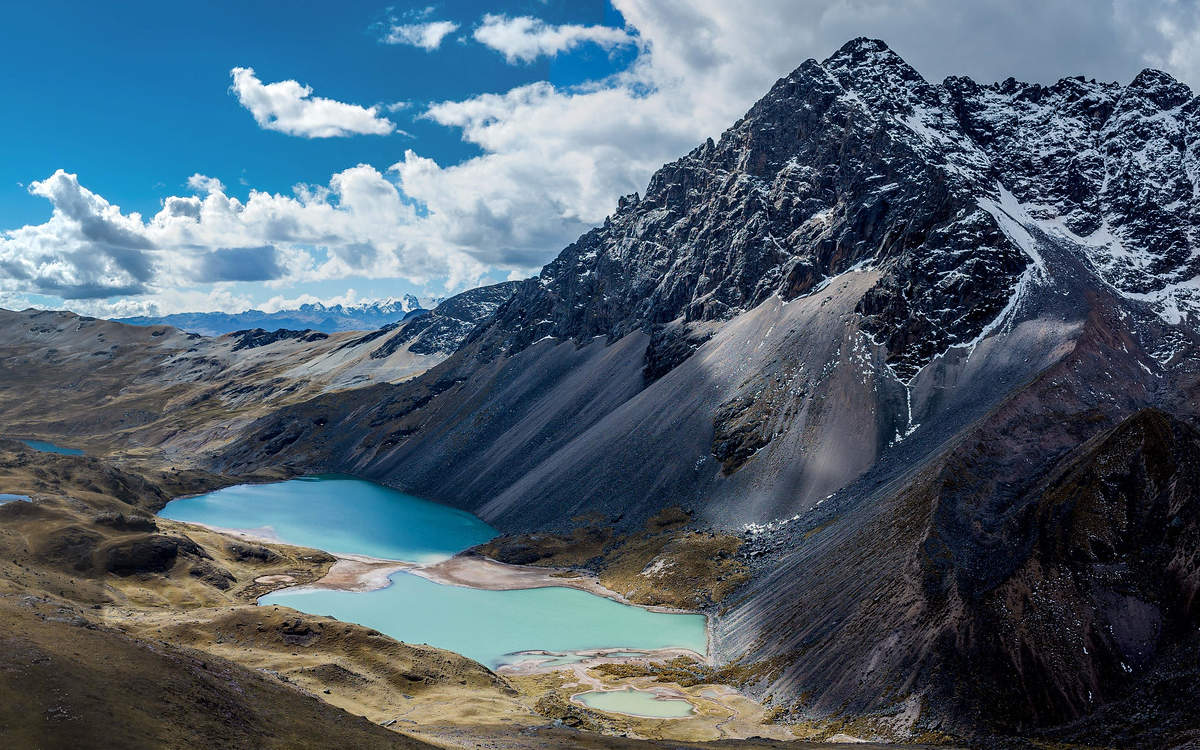
The Andes Mountains as seen from the Ausangate Trek . Image: View of the blue lagunas of the cordillera Vilcanota on the Ausangate circuit by sergejf on Flickr under the CC BY 2.0 License. Resized, cropped and compressed from original.
If you’re at high altitude in Peru, you’re in the Andes region. A mountain range that spans seven South American countries, it’s an impressive destination for hikers, climbers and modern-day explorers. The Peruvian Andes, in particular, boasts breathtaking destinations. There is Lake Titicaca , the highest navigable lake in the world, which has the dream-like floating Uros Islands and other unique cultures. There is Huaraz, which has a seemingly infinite number of hikes for adventure lovers. And then there’s, of course, Machu Picchu , the great Incan citadel that remained hidden from the Spanish conquerors.
Dry season in the Andes region (April-October) is the best time to visit Peru. This is because you’re more likely to get sunny days, most notably at Machu Picchu. During the rainy season, clouds are more likely to obscure the ruins, especially in the morning. You’re also more likely to encounter periodic showers in the Andes during the rainy season.
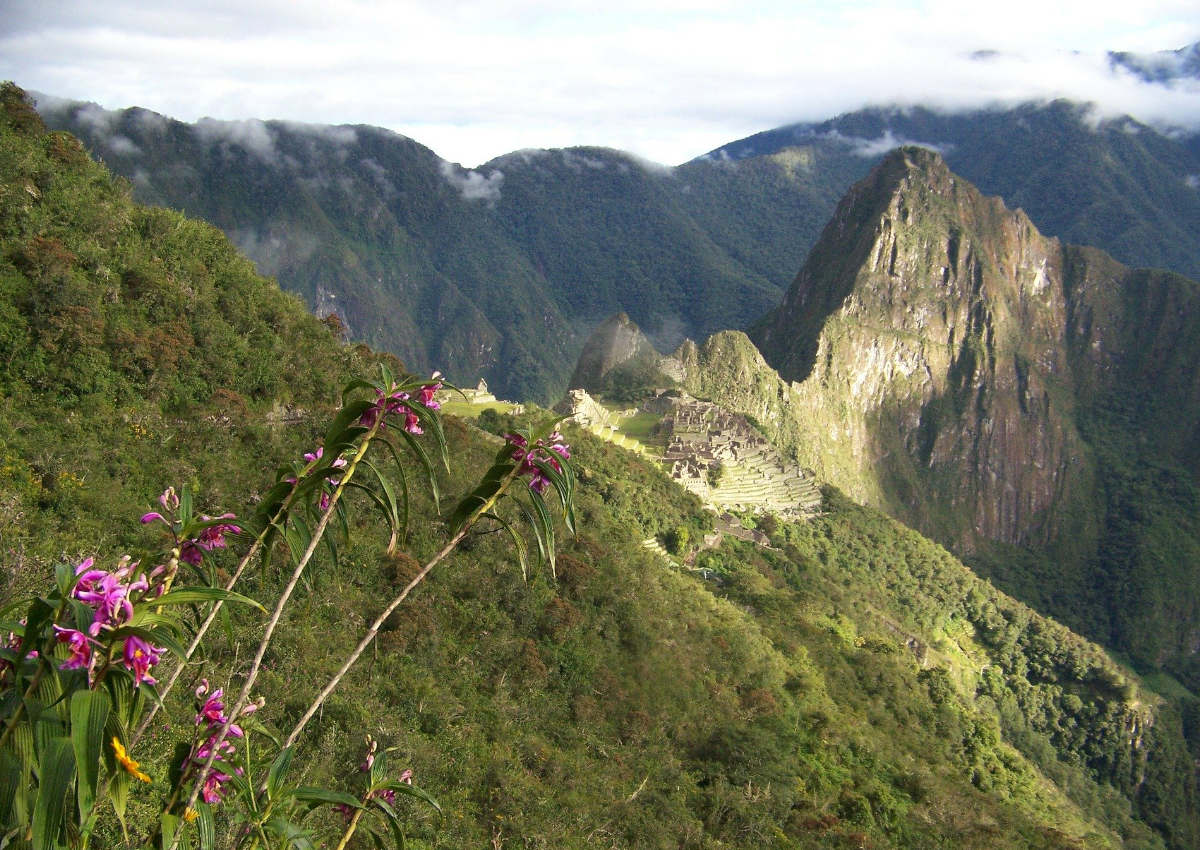
Wild orchids bloom in the wet season between February and April in the green mountains surrounding Machu Picchu. Image by PublicDomainPictures on Pixabay.
Machu Picchu is the number one draw for travelers to Peru and it’s no wonder why! A UNESCO world heritage site, this ancient citadel is a sight to behold. That is, if you can see it. There are a few months of the year that the ruins are obscured in clouds and rain at certain times of day. Therefore, the best time to travel to Peru is when the weather at Machu Picchu is at its best.
So, what is the best month to go to Machu Picchu? Most will say that the dry season, between April and October, is the best time of year to visit Machu Picchu . Likewise, this is also the best time of year to hike the Inca Trail to Machu Picchu.
Specifically, we would recommend April or May as the very best time to visit Machu Picchu. Why? This is a shoulder season with slightly fewer crowds. Moreover, after the heavy rainfalls of the rainy season, the surrounding landscapes on your Peru adventure will be lush and vibrant green. If visiting in April, however, be sure to avoid Semana Santa , or Holy Week leading up to Easter, as this is a very popular vacation time for locals.
As can be said about any destination in Peru, there’s no bad month to visit Machu Picchu. In fact, there are good things to be said for visiting during the rainy season, like fewer crowds and off-season discounts.
Machu Picchu Tours:
Weather in Machu Picchu generally varies between misty clouds, heavy rainfalls and brilliant sunshine. Located in the Andes mountains, it’s typical for weather patterns to shift throughout the day, especially during the Machu Picchu rainy season. If doing an early morning tour of Machu Picchu, be prepared with warm clothes until the sun rises over the mountains. You’ll notice the temperature remains fairly steady year round, but whether it’s cloudy or sunny in the mountains can affect the feeling of the temperature.
The wettest month in Machu Picchu is March, with a rainfall average of 6 inches (141 mm). The driest month is June with an average of .6 inches (17 mm). In terms of temperature, the warmest months in Machu Picchu are November and December, with an average high of 79ºF (26ºC) and low of 55ºF (13ºC). The coolest months are June and July, with an average high temperature of 77ºF (25ºC) and low of 48ºF (9ºC).
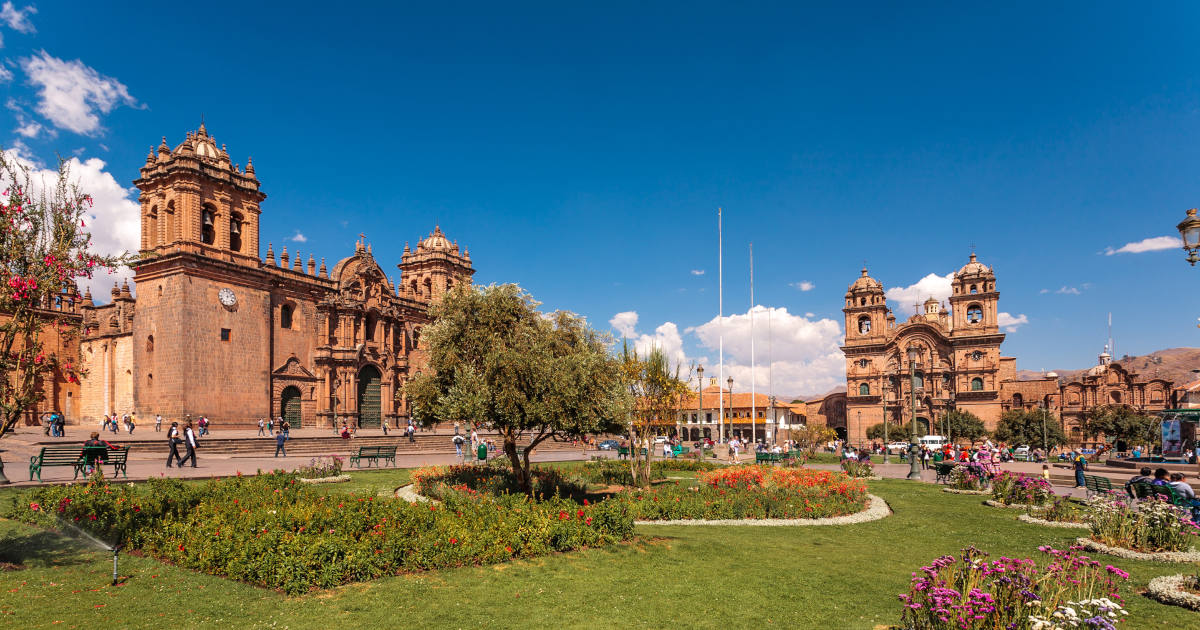
The Plaza de Armas of Cusco on a sunny blue day.
Like Machu Picchu, the best time to visit Cusco and the Sacred Valley is during the dry season between April–October. These three regions share similar weather patterns, though typically the Sacred Valley gets a bit more sunshine than Cusco. Year-round you can expect nighttime temperatures to drop and shaded areas to be chilly. Always dress in layers in the Andes, no matter when you’re traveling to Peru.
Cusco . The average high and low temperatures in Cusco during the wet season (Nov-Mar) is 67ºF/44ºF (19ºC/6ºC). Average rainfall during the wet season is 12 days of the month. The average high and low temperatures in Cusco during the dry season (Apr-Oct) is 68ºF/37ºF (20ºC/3ºC). Average rainfall during the dry season is 3 days of the month.
Sacred Valley . The average high and low temperatures in the Sacred Valley during the wet season is 69ºF/45ºF (21ºC/7ºC). Average rainfall during the wet season is 13 days of the month. The average high and low temperatures during the dry season is 69ºF/38ºF (21ºC/3ºC). Average rainfall during the dry season is 3 days of the month.
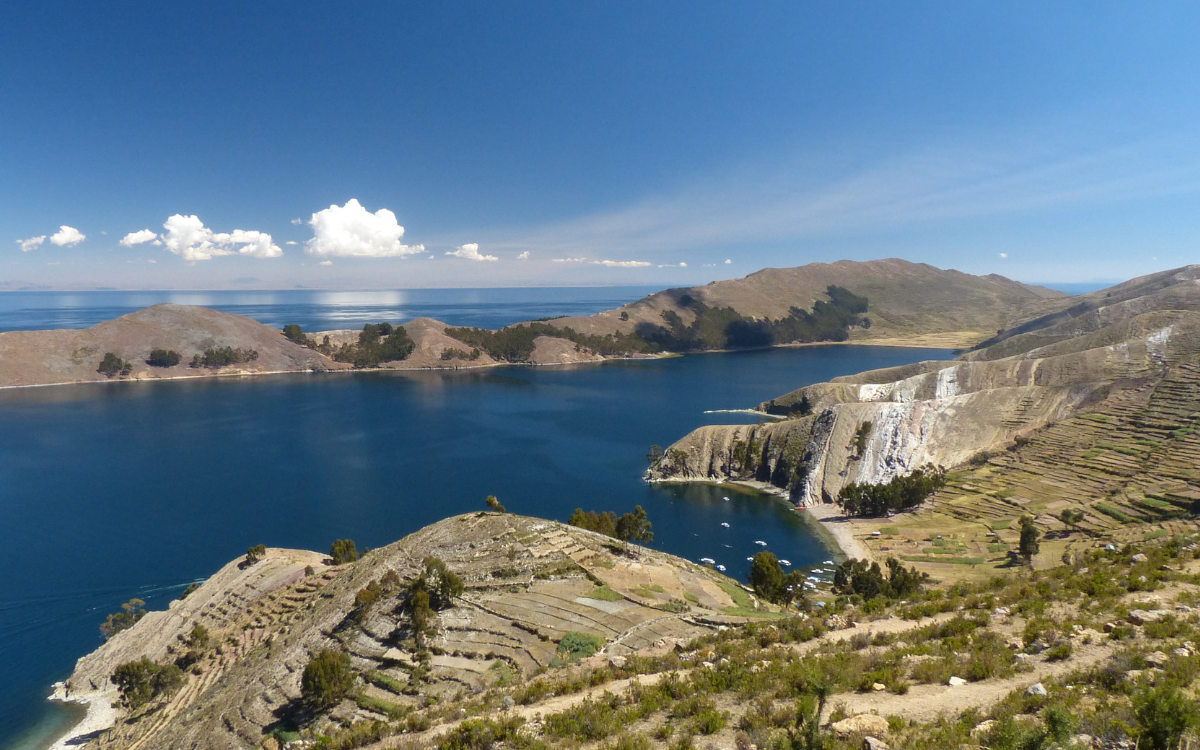
Lake Titicaca on a clear day during the dry season. Image by fransoopatrick on Pixabay.
The best time to visit Lake Titicaca is during the dry season in the Andes between April-October. Adding on Lake Titicaca after Machu Picchu is a perfect way to discover more of Peru’s archeological treasures since you’ll already be acclimated to the high altitude. Lake Titicaca is brimming with culture, color, and wonder! Sunsets over the lake are uniquely painted in the sky by the thin air. History is in its very soil and even the depths of the lake reveal more to us about the cultures that still call this place home.
Coldest months in Lake Titicaca are June and July with an average high of 61ºF (16ºC) and average low of 19ºF (-7ºC). Warmest month is November with an average high of 66ºF (19ºC) and low of 36ºF (2ºC). The wettest month is January with 5 inches of rain (133 mm) and the driest month is July with .7 inches (2 mm).
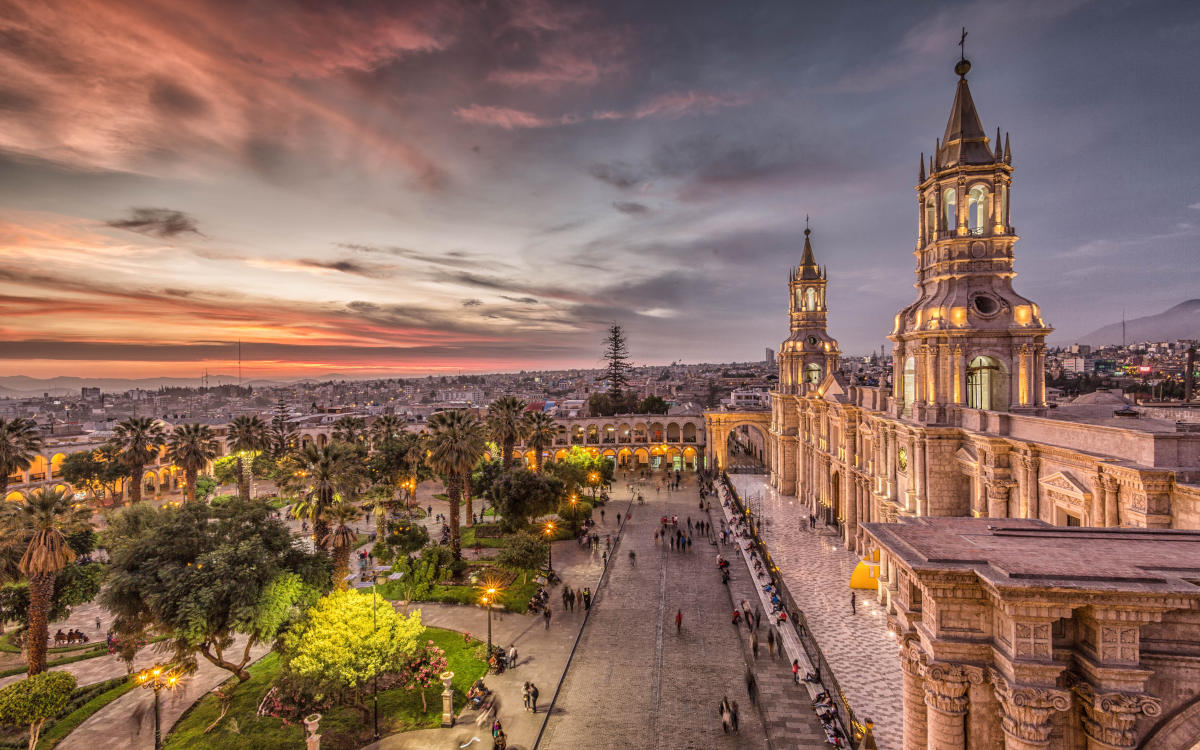
Plaza de Armas of Arequipa.
The best time to visit Arequipa and Colca Canyon is in April or May, during the shoulder season after the rainy season in the Andes region. This is when the area is at its most lush and most picturesque. Arequipa gets an exceptional number of sunny days each year (300+). However, temperatures average only 59F (15C) year-round. December to March marks the rainy season, though rainfall is milder than in other regions of the Andes.
Arequipa-white-cathedral:
Alt-Description: The Basilica Cathedral of Arequipa, a white stone Catholic cathedral, is seen through the walkways of Arequipa’s main square.
Description: The best time to visit Arequipa is in April or May. Photo by Ana Castañeda for Peru for Less.
Average high and low temperatures in Arequipa during the wet season (Nov-Mar) is 74ºF/52ºF (23ºC/11ºC). The average rainfall during the wet season is about 3 days of the month. Average highs and lows during the dry season (Apr-Oct) is 75ºF/49ºF (24ºC/9ºC). The average rainfall during the dry season is 0 days of the month.
It’s not just weather that’s a determining factor in deciding when to travel. It’s also important to look out for regional holidays. During holidays and festivals in the Andes, it can get very crowded, traffic can be more congested, and lodging and dining options can be limited and pricier. On the other hand, certain festivals can provide an amazing cultural experience. Either way, here are the significantly busy holidays to be aware of:
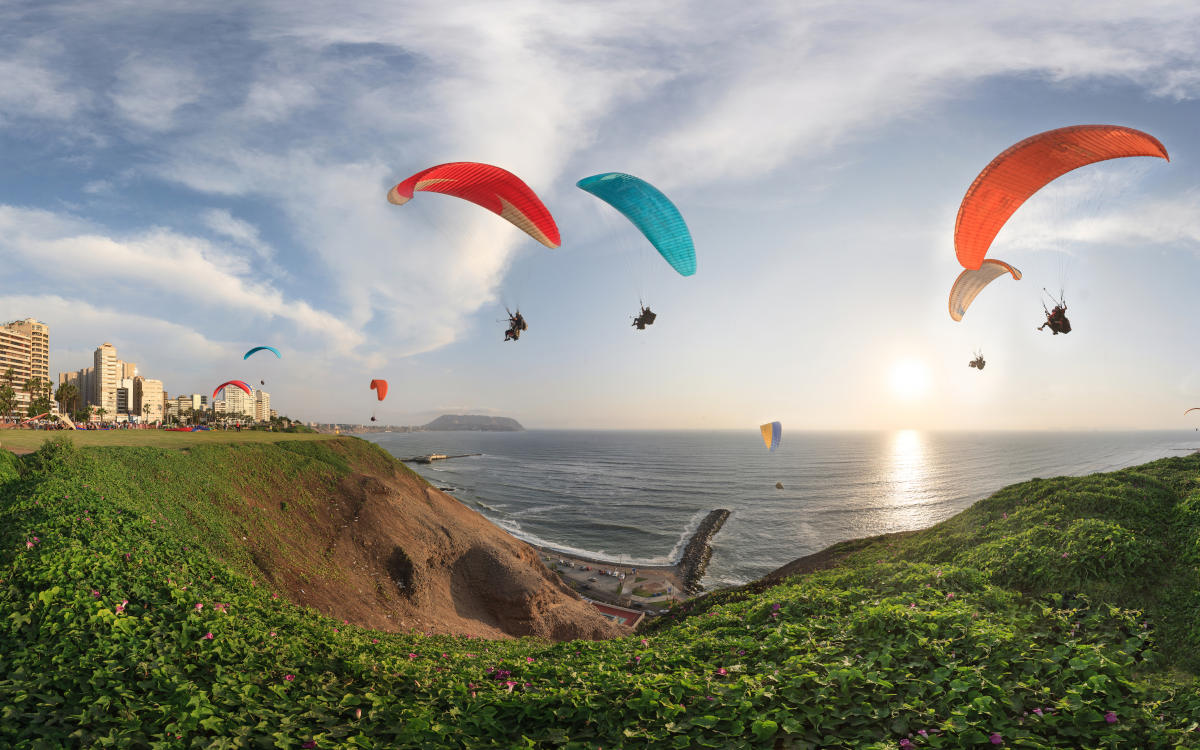
Paragliders soaring over the Pacific coast of Miraflores, Lima.
Peru’s coast is home to the capital city of Lima, the beach towns of Mancora and Piura, and the desert destinations of Nazca Lines , Paracas and Huacachina. Peru’s desert, the Sechura Desert, stretches to the northern border of Peru, along the coast, and to the foothills of the Andes mountains. For archaeological mysteries, stellar surfing opportunities, interesting sea creatures, and one of the most amazing cities in all of South America, head to the coast.
The best time to visit the coast is during the summer months (November to April) . This, unfortunately, coincides with the rainy season in the Andes, home to Machu Picchu. There is an ideal moment of overlap, however, during the shoulder seasons in April/May and October/November where you can still have great weather both on the coast and up in the Andes. fInti
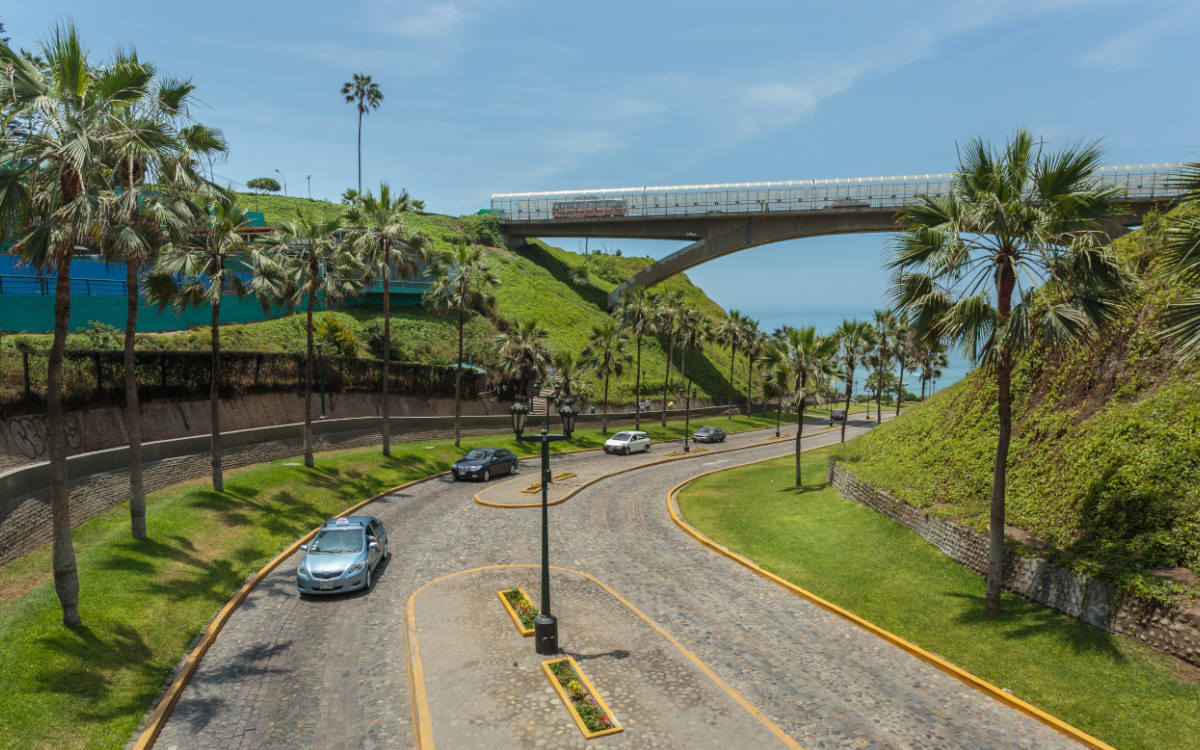
Road leading down the the ocean in Miraflores.
The best time to visit Lima is during the dry season on the coast between November to April .
Lima is located in the coastal desert region of Peru. But while it’s easy to imagine it hot, and sunny year-round, Lima has winters that come with prolonged overcast skies despite it never quite raining. Many Limeños, or Lima residents , wear scarves and jackets during the windier and colder winter months.
The warmest month in Lima is February, with a high/low of 81ºF/66ºF (19ºC/26ºC). The coldest month in Lima is August with a high/low of 64ºF/59ºF (15ºC/18ºC). In general, the summer months (December-March) are warm and sunny and the winter months (June-September) are misty and grey. Shoulder months (April, May, October and November) have a mix of clouds and sunshine.
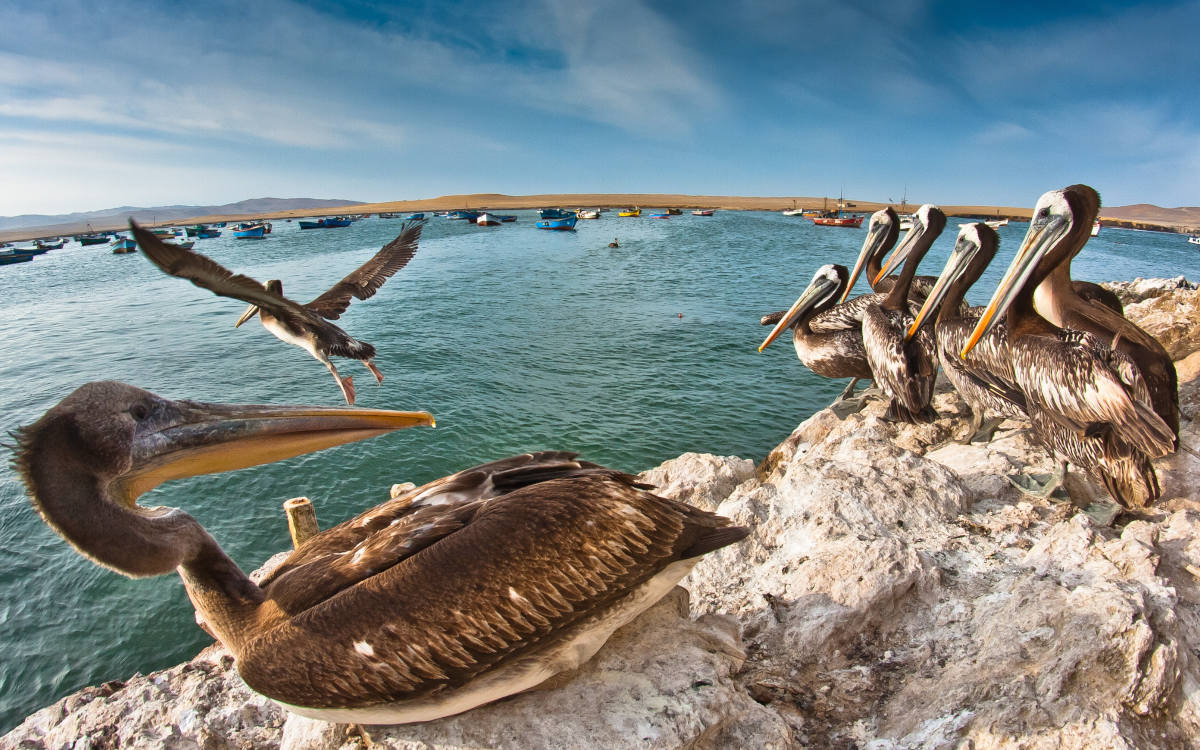
You can spot pelicans year round in Paracas.
The best time to visit Paracas or take a Nazca Lines tour is during the dry season on the coast between November to April. Like Lima, Paracas is also located in the coastal desert region of Peru. This is a popular spot for visiting the biodiverse Ballestas Islands and the Nazca Lines. Paracas is Limeños’ beach getaway destination during the summer making it full of life and activity. For a quieter getaway with fewer people, visit during the wet season or winter months. However, this season will be windier. For tours like Ballestas Islands opt for the earlier tour at 7 a.m. instead of 10 a.m. for a significantly less choppy boat ride. Nazca Line overflights operate year-round but only in the midmorning to midafternoon due to wind conditions.
Paracas . The warmest temperatures in Paracas are in February with a high/low of 84ºF/67ºF (29ºC/19ºC). The coolest temperatures are in August 70ºF/56ºF (21ºC/13ºC). There is little to no precipitation year round.
Nazca . The warmest month in Nazca is March, with a high/low of 92ºF/67ºF (33ºC/19ºC). The coolest month is July with a high/low of 78ºF/51ºF (25ºC/10ºC). Like Paracas, there is little to no precipitation year round and almost always clear skies.
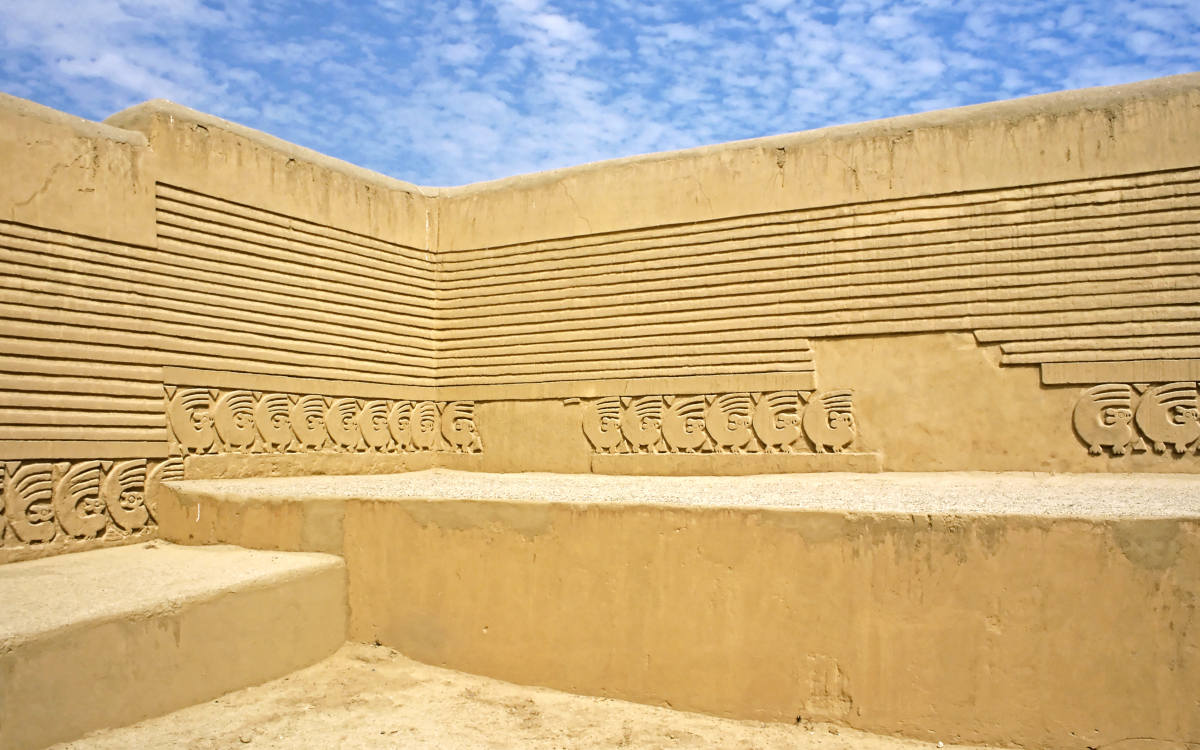
The famous Chan Chan ruins.
Trujillo is blessed with great weather year-round . Nicknamed the City of Everlasting Spring, it is a marvel of a city on the coast north of Lima. With a mixed bag of neoclassical architecture, Italian sculptures, Peruvian traditions like marinera dancing and the Peruvian Paso horse, and the Chan Chan ruins that predate Machu Picchu . It makes for an ideal destination to add on to your Peru itinerary because it can be enjoyed any time of the year.
The warmest month in Trujillo is March, with a high of 79ºF (26ºC) and a low of 67ºF (19ºC). The coolest months in Trujillo are August and September, with a high/low of 69ºF/59ºF (20ºC/15ºC). There is an average of 0 days of rain per month year-round.
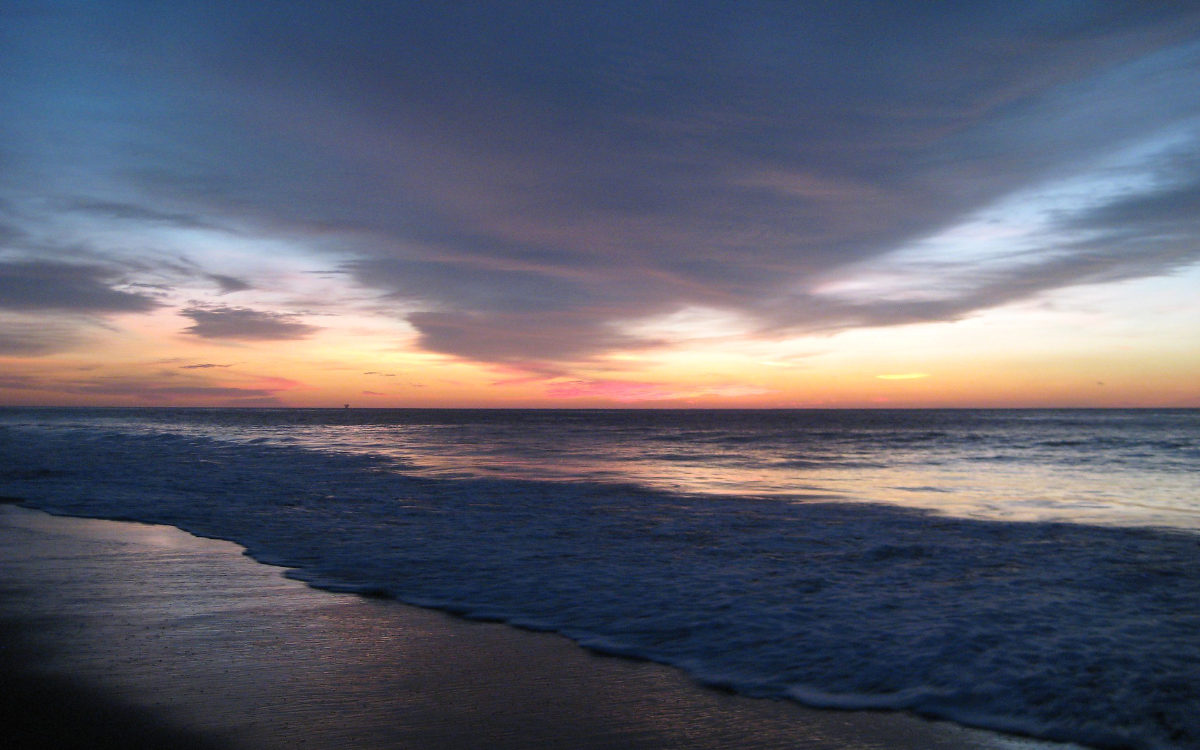
Sunset over the Pacific in Mancora.
The best time to visit Mancora is during the dry season on the coast between November and April. Mancora is one of the best beach destinations in Peru bringing in local and foreign visitors, especially from mid-December to February. New Year’s, in particular, is a popular time to visit Mancora. Located in Northern Peru, close to the border with Ecuador, it is the ideal place to get some R&R. The wet season in Mancora is brief, lasting only a couple of months — March and April.
The warmest month in Mancora is March with an average temperature of 80°F (27°C). August is the coolest month, with temperatures averaging 70ºF (21°C). There is barely any rainfall throughout the year, but the wettest month is February with one inch (29mm) and driest are July through November with 0 inches on average (no rain at all).
Like in the Andes, while weather is a major factor when deciding when to visit Peru, so are holidays. There are some holidays on the coast that can affect traffic, hotel availability and tour/site opening. Here are some holidays to be aware of if you’re traveling to the coast:
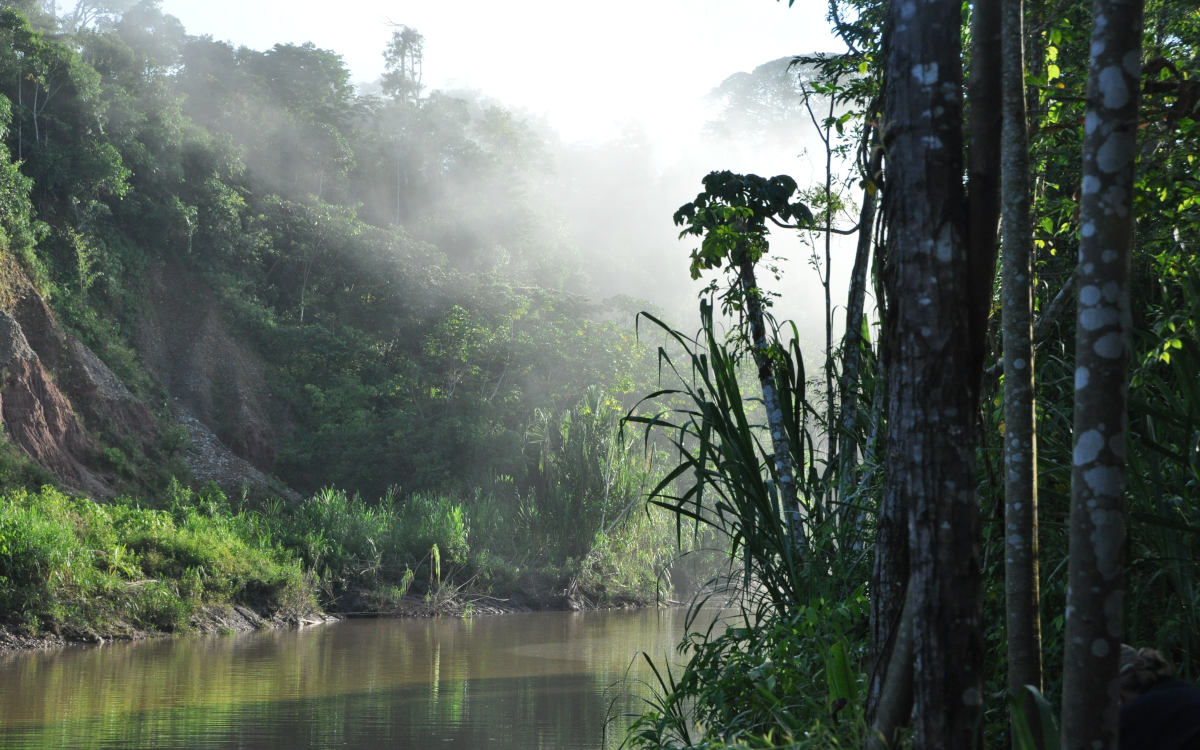
Morning mist rising off the river in the Amazon.
Spanning eight South American countries, The Amazon Rainforest is the largest remaining rainforest on the planet. It is also one of the world’s most biodiverse places and home to jaguars, pink dolphins, macaws, monkeys and many more amazing creatures! A trip to the Amazon allows you to explore the flora and fauna, connect with local Amazononian communities and relax in a jungle lodge right among the birds and trees.
The best time to visit Peru if you’re interested in exploring the Amazon Rainforest is during the dry season between June to December. In the Amazon, there is a dry season and a rainy season like other regions of Peru. However, you’re likely to experience high humidity, heat, and rain regardless of the season. Good things can be said about both seasons, but the high season for travel is during the dry season.
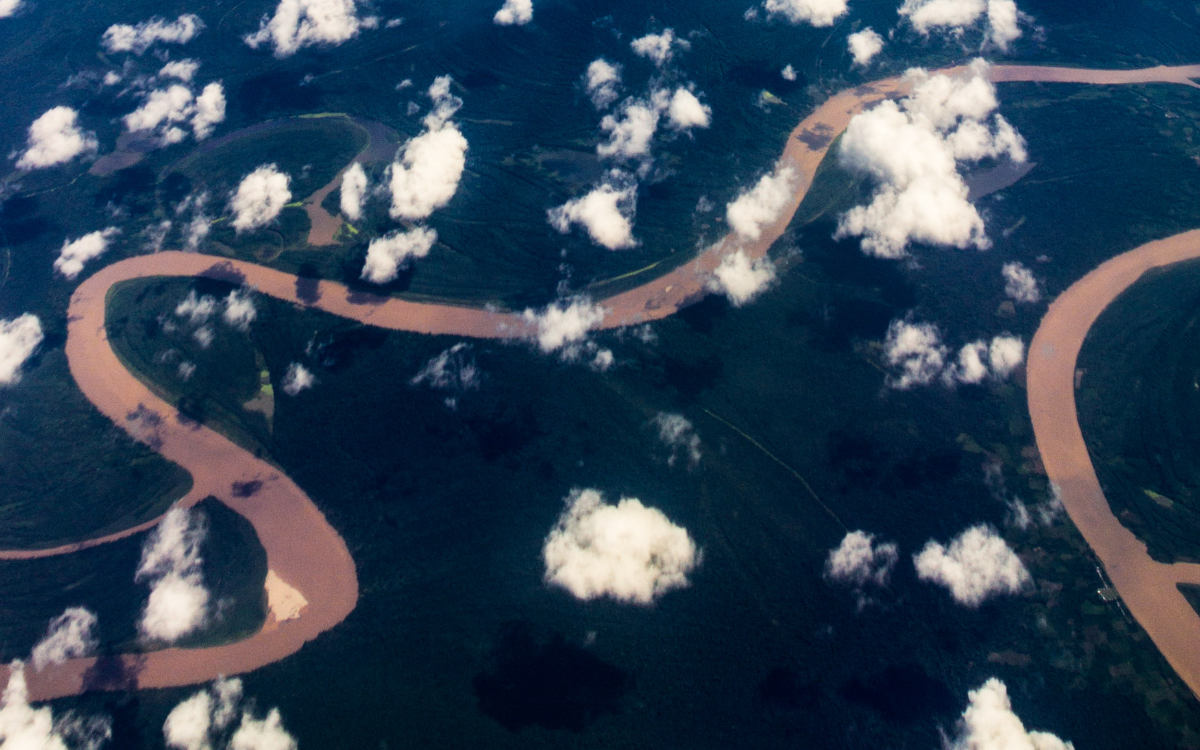
Aerial view of the Amazon River snaking through the jungle. Image: clouds-32 by Apollo on Flickr under the CC BY 2.0 License. Resized, cropped and compressed from original.
Iquitos is a destination that can be visited year-round. The best way to plan when to go to Iquitos is to base your decision on your desired activity level. The wet season will have you doing more sitting boat excursions due to higher water levels at this time of year. Dry season means you’ll have more walking/hiking excursions.
Read more about the best time to visit Iquitos in our full Iquitos Travel Guide .
The temperatures year-round in Iquitos stays pretty stable, with an average high of 89-90ºF (31-32Cº) and a low of 69-71ºF (20-22ºC). It also rains pretty steadily year-round, with September being the driest with an average of 10 days of rain per month. The wettest month on average is March with an average of 15 days of rain per month. During the high water season (December-May), water floods the jungle floor making much of it navigable only by boat.
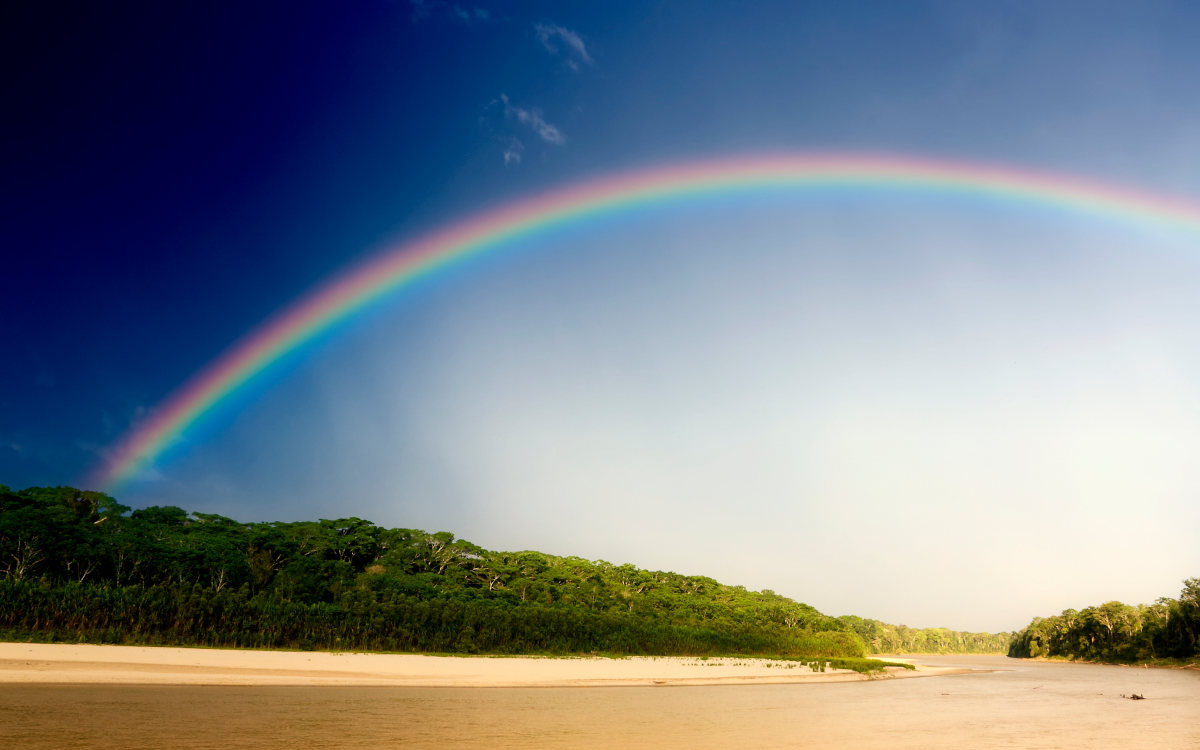
Rainbow over the river in the southern Amazon Rainforest.
The best time to go visit Puerto Maldonado is during the dry season in the Amazon region between June and December. Visitors can enjoy the Amazon year-round but heavier rains during the wet season make it the off-season for tourism. Unlike Iquitos, the wet season in Puerto Maldonado doesn’t mean less walking. Instead, you’ll be trekking along muddier trails. This isn’t all bad, though. Muddy trails are prime places to spot fresh animal prints. And don’t worry, the majority of lodges provide mud boots to guests.
The average daily high temperature in Puerto Maldonado ranges steadily between 85-91ºF. The low ranges between 64-72ºF. June and July tend to be the coolest months and October the warmest. Rainfall ranges significantly, with the driest month being July with an average of 2 days of rain per month and the wettest being January with an average of 17 days rain per month.
The Amazon also has its influx of local tourism during the holiday season. During this times the lodges can fill up quite quickly and have higher rates. Also, more people can cause the wildlife to scatter and be harder to spot. Here are the holidays to try to avoid if you’re traveling to the Amazon :
While there is no bad time to visit Peru, there is a best time to visit Peru! If aiming to visit all three regions during your Peru adventure, the best months to visit Peru are April or May. You’ll have better chances of good weather on the coast, clear skies in the Andes, and more boat excursions (vs. walking excursions) in the Amazon. Of course, Peru is constantly in flux, its ecosystems shift as the year turns and there is beauty and inspiring vistas to be had year-round! The best time to visit Peru, truly, is as soon as possible!
Contact us to talk with one of our expert Travel Advisors and start planning your dream Peru vacation today!



Email: [email protected]
Sign up to receive our newsletter for great articles, stunning photos, and special deals.